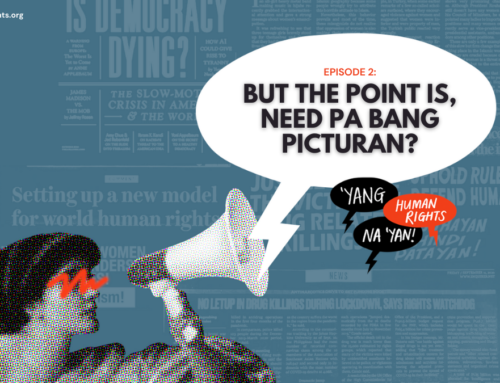(CNN) — The man in the picture has his back to the camera. He’s desperately clawing at a subway platform, looking right at the train that’s bearing down on him as he stands on the tracks.
It’s a terrifying, heart-wrenching image, and it’s generating a lot of criticism for the newspaper that used it on its front page — the salty, sensational New York Post.
Why didn’t the photographer help? Why did the newspaper publish the photo?
“NY Post should be ashamed of its misuse of humanity for its cover photo of a man about to be killed by a subway train,” one person wrote on Twitter. “When does cruelty end.”
“Snuff porn,” another user labeled it.
A freelance photographer captured the image Monday after someone shoved the man, 58-year-old Ki-Suck Han, from a subway platform near Times Square.
Seconds after photographer R. Umar Abbasi captured the images, the train fatally struck Ki. He died at a New York Hospital, leaving behind a wife and daughter.
A man officers were questioning “implicated himself” in the incident, police said Tuesday night. Police gave no other information on the suspect and this news may do nothing to quell the ongoing debate about the controversial photo.
“Doomed,” the headline read. “Pushed on the subway track, this man is about to die.”
In its story on the incident Tuesday, the Post reported Abbasi was waiting on the platform when he saw the man fall onto the tracks. He said he ran towards the oncoming train, firing his camera’s flash to warn the driver.
“I just started running, running, hoping that the driver could see my flash,” the newspaper quoted him as saying.
“In that moment, I just wanted to warn the train — to try and save a life,” the Post quoted him as saying.
Some critics, however, questioned Abbasi’s motives.
One Twitter user questioned why someones first instinct would be not to help the man, but instead to “snap a photo of him about to die and sell it to the NY Post.”
Reached by CNN, Abbasi was adamant that he would talk to the network only for pay.
The Post declined to comment.
Media observers wondered Tuesday if the newspaper had gone too far this time.
“Even if you accept that that photographer and other bystanders did everything they could to try to save the man, it’s a separate question of what the Post should have done with that photo,” Jeff Sonderman, a fellow at journalism think tank the Poynter Institute, wrote on the organization’s website. “All journalists we’ve seen talking about it online concluded the Post was wrong to use the photo, especially on its front page.”
Kenny Irby, Poynter’s senior faculty member for visual journalism and diversity programs, said what the paper did wasn’t necessarily wrong.
“It was not illegal or unethical given that ethical guidelines and recommendations are not absolute,” he said in an e-mail. But he also thought the Post could have used another photo because this one crossed the line of dignity.
“This moment was such for me — it was too private in my view,” he wrote. “I am all for maximizing truth telling, while minimizing harm, which can be done by fully vetting the alternatives available and publishing with a sense of compassion and respect.”
The Post is no stranger to walking up to the lines of journalistic ethics, and sometimes crossing them, with its pithy, often lurid, coverage of crime and other news in the Big Apple.
“HEADLESS BODY IN TOPLESS BAR,” the newspaper once famously shouted from its cover.
The Post shot is hardly the first news photo to generate ethics concerns.
An Agence France-Presse photo that won the 2012 Pulitzer Prize generated controversy for its depiction of a girl in Afghanistan crying amid a number of bloody bodies.
Also this year, the New York Times published a graphic image showing blood streaming from the body of a victim following a fatal August shooting at the Empire State Building.
At the time, Poynter quoted a Times spokeswoman as saying the image was “a newsworthy photograph that shows the result and impact of a public act of violence.”
CNN’s Pauline Kim, Yon Pomrenze and Mary Snow contributed to this report.







